Gear Reviews
Review: Empress Bass Compressor
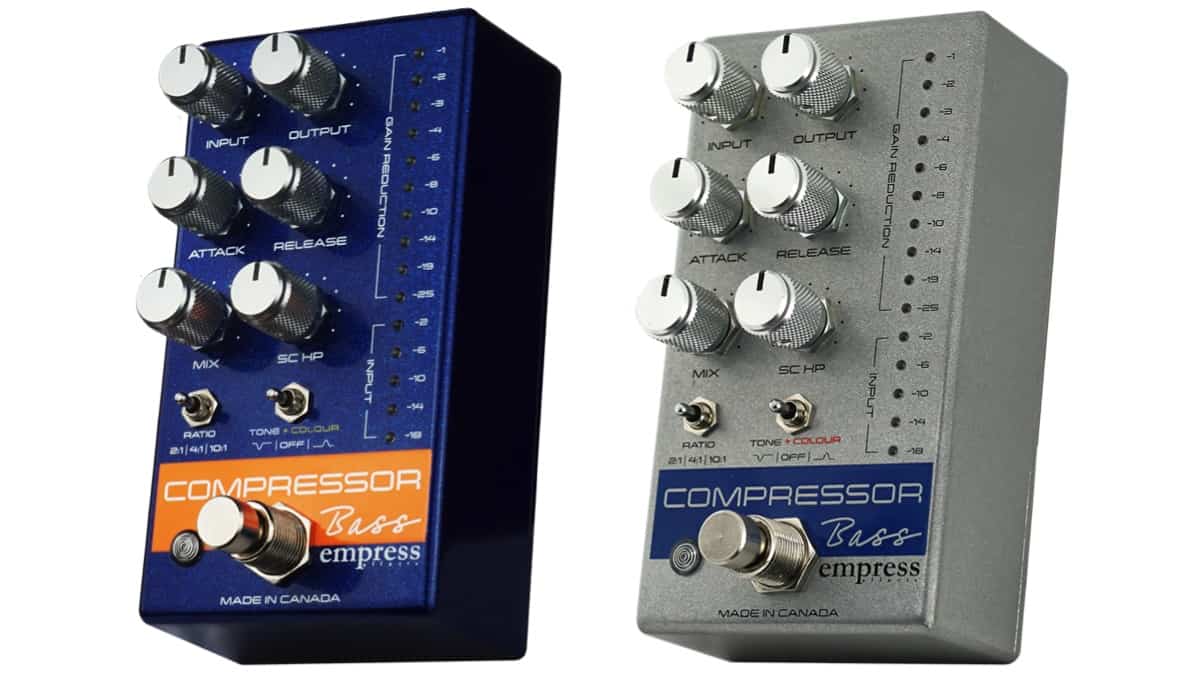
Review of the Empress Bass Compressor…
Compressor pedals seem to be contentious territory for bassists. Some players swear by them as the glue that helps keep their levels stable and consistent, while others feel they squash their dynamic range and limit their ability to play with nuance and touch. I like certain compressors for their ability to fatten up my sound and bring the bass forward, acting as a bit of a “fat boost” if you will, but I don’t want to hear coloration, or any pumping or squashing. So, for me, it’s critical to have control over the various compression parameters to ensure that I’m getting all the attributes I want, and nothing I don’t.
There are a lot of compressor pedals available that are suitable for bass, which can most simply be broken up into a couple of different camps: The simpler vs the more complex, and the transparent/clean vs the more voiced/colored units. I’ve owned a handful of compressor pedals over the years, bass-specific and otherwise, and it’s taken me a minute to figure out exactly what I like. When I first got into compression, I understandably gravitated towards the simpler ones, some of which sounded darn good. While the 1 or 2 knob comps are less overwhelming and typically harder to get a bad sound out of, the cost of simplicity is lack of control over individual factors affecting behaviors like attack, decay, threshold, ratio, etc. The flipside of course is that the more complex compression pedals require a working knowledge of how a compressor works. Thankfully, users who spend the time to learn how to dial in the parameters to their liking are rewarded with results that best suit their preferences.
As far as the ‘transparent vs. voiced’ question, I’ve gone back and forth over the years. There are some REALLY good-sounding compressor pedals with built-in desirable coloration that sound fantastic. Personally, my journey with compressors has led me to look for units that have studio-level transparency with a high degree of adjustability and some key features that allow me to indulge my very finicky degree of preference. My best results seem to come from getting voicing and coloration from other effects or preamps specifically for that purpose, so that color is not automatically tied to the compression effect. Others like to achieve both goals with one pedal. Your mileage, as always, may vary.
To that end, and to get to the point, I have been using the OG Empress Compressor for the last several years with great satisfaction. The original dark blue Empress is just a classic. It checks all the boxes for the versatility I want while sounding transparent and clean. The huge bank of LED’s is fantastic for level setting, and the whole package just plain works like a charm.
Naturally, when Empress announced they were releasing a new bass-specific compressor in a smaller chassis with top-mounted jacks and some bass-specific features, I was all in.

So too was the rest of the market it seemed, and the initial couple of runs went quick. It took me a while to finally get my hands on one, and I’m happy to report that it was well worth the wait.
Like the original Empress Compressor, the Empress Bass Compressor has an Input knob to control how hard you drive the compressor as well as an Output level to get the desired amount of signal coming out of the pedal. I like setting the input so that it is engaging the compressor but not slamming it and setting the output to roughly match the bypassed signal so that it plays nice with input-sensitive effects downstream. Like the original, the Bass Compressor has great LED metering: One set to show how much signal is coming in, and one to show the level of gain reduction (how much compression the unit is generating).
Dedicated Attack and Release knobs allow you to precisely control how fast or slow the compressor latches on to and releases your signal, effectively allowing you to sculpt how the pedal responds, and how long it holds on to your sound before letting go. This is where a lot of the character of the compression is controlled.
One of my favorite features of both the new and old Empress Compressors is the Mix knob, which lets one fine-tune how much of the sound is affected; perfect for the guy like me who doesn’t really want to hear the compressor working and ultimately wants a subtle effect. The Sidechain High Pass knob is one of two new standout features that set the Empress Bass Comp apart from the original. In a nutshell, as you turn this knob up, it allows more of your low end to pass through unaffected, with compression applying increasingly to the low mids and mids. This is great for those who want to tame their upper frequencies while retaining a full low end with less gain reduction in that register. Those who feel that compressors mess with their dynamics will appreciate this control, as it lets them feel the impact of the bass as usual but can help wrangle the transient spikes in the treble and upper mids. In conjunction with the Mix knob, these two controls offer a great way to increase the subtlety and transparency of the Empress Bass Compressor while still retaining the effect.
A 3-way switch allows users to choose between a subtle 2:1 compression ratio, a more standard 4:1 ratio, or a more extreme 10:1 ratio. I would prefer a ratio knob offering more granular control over ratio, but I’ve actually never found myself struggling to find the right choice with these 3 settings, as they’re very well chosen for light, medium, and heavy compression settings. The other 3-way switch controls the other new standout feature, the “Tone and Colour” setting, which essentially transforms the Empress into a more colored compressor on demand. While the middle setting offers the flat transparent sound I am used to, there are gentle mid-scoop and mid-bump settings, which are really well voiced and not too overt, but shift overall tonality in a musical and effective way. This makes the Empress Bass Comp compete strongly in both the “transparent” and “voiced” compressor camps. One could argue that because it does both very well, its double threat capability makes it a no-brainer.
Lastly, like the OG Empress comp, the Empress Bass Compressor features a 1/8” mini-input jack for sidechaining. This is the old studio trick of triggering your compressor not by your input signal, but from an external source. One classic application for this would be using the attack of the kick drum to compress the bass signal, sometimes used to create dynamics and space for the kick drum by ducking the bass signal when the kick drum hits. This is just one example though: the sky is truly the limit for all the creative ways this can be used on stage and in the studio.
Overall, the new Empress Bass Comp is a slam dunk.
It took everything I loved about the original, added some fantastic new bass-specific features, put it in a smaller, more pedalboard-friendly format, and gave it a sharp makeover. The build quality seems even better than the original, with more robust feeling pots and jacks and a wicked royal blue sparkle paint job (also available in silver sparkle). Kudos to Empress for taking something great and truly making it better for bassists. The new Empress Bass Compressor retails for $249.00.
For more info on the Empress Bass Compressor, visit online at empresseffects.com/products/bass-compressor
Bass Videos
String Instrument Humidifiers
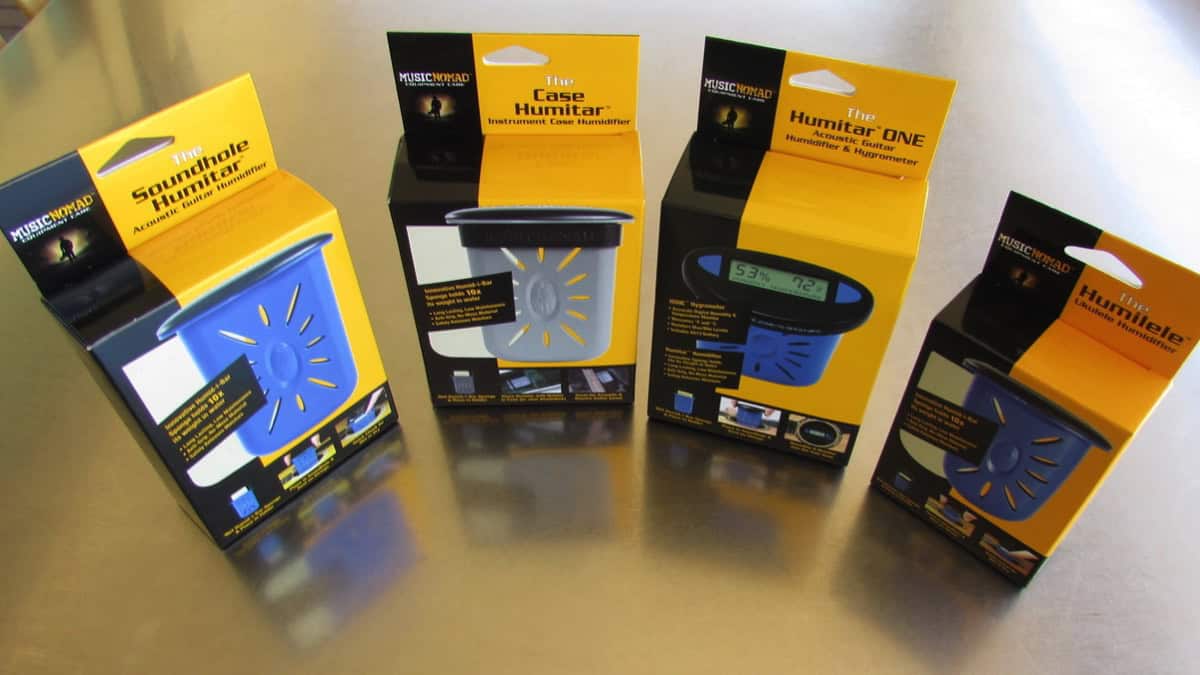
String Instrument Humidifiers
After living in some very humid parts of the country for decades, we moved to a dryer, much sunnier location. As a result, I started noticing some fret sprout on my string instruments and recently did a video on fret sprout correction.
It occurred to me that I should take a more preventative approach to string instrument humidification. Of course, I turned to my instrument maintenance experts, Music Nomad Equipment Care, for a solution and they suggested their Humitar series. (Note: They sent two press samples and I purchased the remainder online.)
Join me as I look at these useful tools for keeping my string instruments in tip-top condition.
The Humitar series is available online at Music Nomad Equipment Care, as well as Amazon.com
Bass Videos
Review: CrystalBright Rombo Picks
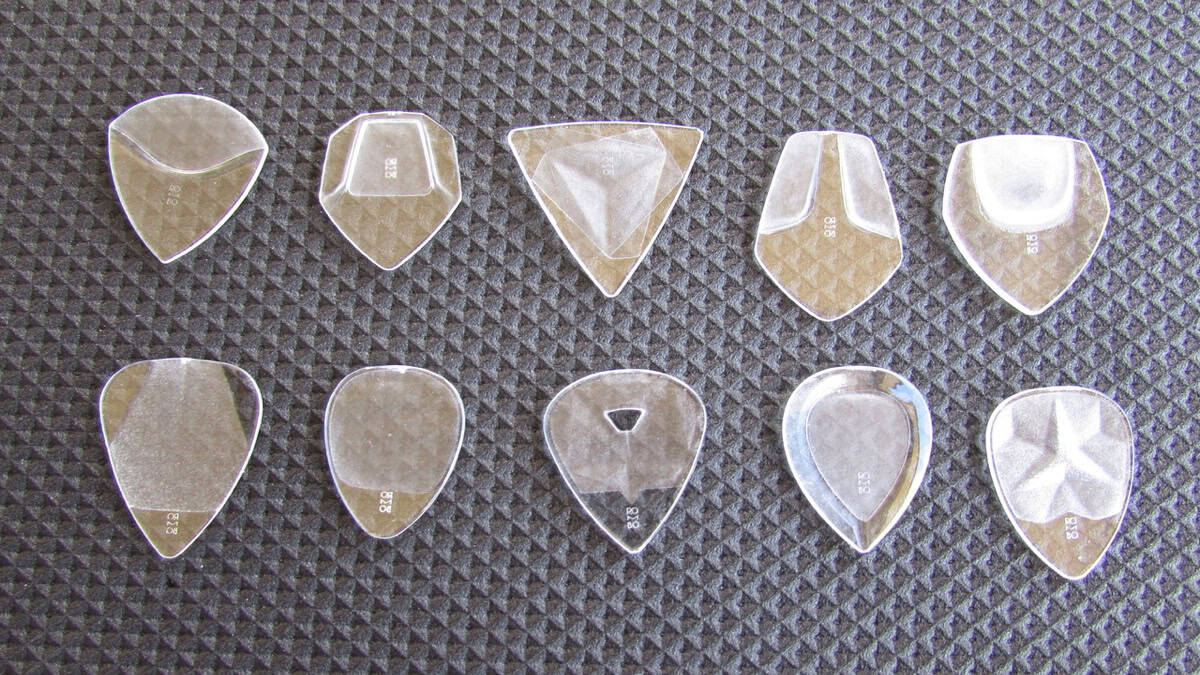
CrystalBright Rombo Picks
PR SamplePlaying bass with a pick is still a touchy subject in our community. I believe you should be able to use whatever you need to get your sound. Even though I mostly play with my fingers, I like to check out innovative new picks that might have something new to offer, sonically speaking.
Judith and Carlos from Rombo recently contacted me about a new material called CrystalBright that they have been researching for the last 12 months and offered to send some prototype picks. After trying them out, I put together this video with my findings.
For more info check out @rombopicks
Gear
New Joe Dart Bass From Sterling By Music Man

Sterling by Music Man introduces the Joe Dart Artist Series Bass (“Joe Dart”), named after and designed in collaboration with the celebrated Vulfpeck bassist.
Above photo credit: JORDAN THIBEAUX
This highly-anticipated model marks the debut of the Dart bass in the Sterling by Music Man lineup, paying homage to the Ernie Ball Music Man original that all funk players know and love. The bass embodies many of the original model’s distinctive features, from its iconic minimalist design to the passive electronics.

The design process prioritized reliability, playability, and accessibility at the forefront. Constructed from the timeless Sterling body, the Dart features a slightly smaller neck profile, offering a clean tone within a comfortable package. The body is crafted from soft maple wood for clarity and warmth while the natural finish emphasizes the simple yet unique look.
Engineered for straightforward performance, this passive bass features a ceramic humbucking bridge pickup and a single ‘toaster’ knob for volume control. Reliable with a classic tone, it’s perfect for playing in the pocket. The Dart is strung with the all-new Ernie Ball Stainless Steel Flatwound Electric Bass Strings for the smoothest feel and a mellow sound.

The Sterling by Music Man Joe Dart Bass is a special “Timed Edition” release, exclusively available for order on the Sterling by Music Man website for just one month. Each bass is made to order, with the window closing on May 31st and shipping starting in November. A dedicated countdown timer will indicate the remaining time for purchase on the product page. Additionally, the back of the headstock will be marked with a “2024 Crop” stamp to commemorate the harvest year for this special, one-of-a-kind release.
The Joe Dart Bass is priced at $399.99 (MAP) and can be ordered globally at https://sterlingbymusicman.com/products/joe-dart.
To learn more about Joe Dart, visit the official Vulfpeck artist site here https://www.vulfpeck.com/.
Gear Reviews
The Frank Brocklehurst 6-String Fretless Bass Build
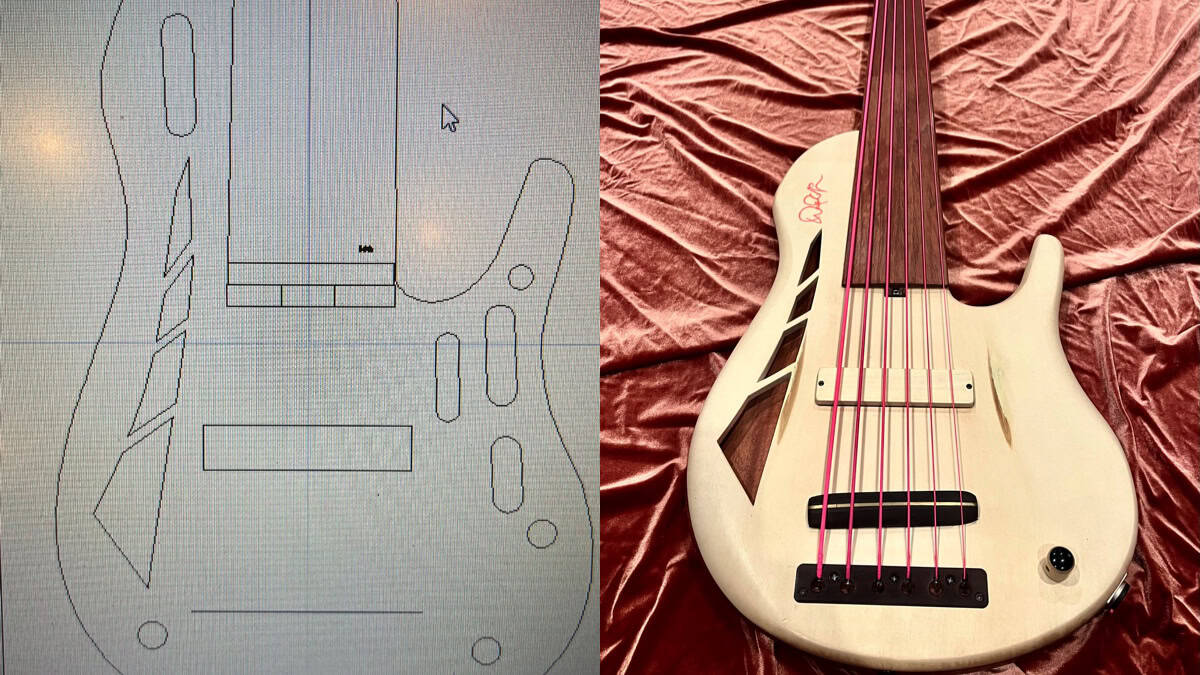
A few months ago, my Ken Bebensee 6-string fretted bass needed some TLC. You know, the one rocking those Pink Neon strings! I scoured my Connecticut neighborhood for a top-notch luthier and got pointed to Frank Brocklehurst, F Brock Music. He swung by my place, scooped up the bass, and boom, returned it the next day, good as new. Not only that, he showed up with a custom 5-string fretted bass that blew me away. I couldn’t resist asking if he could whip up a 6-string fretless for me.
Alright, let’s break down the process here. We’ve got our raw materials: Mahogany, Maple, and Holly. Fun fact – the Mahogany and Maple have been chilling in the wood vault for a solid 13 years. Frank is serious about his wood; they buy it, stash it away, and keep an eye on it to make sure it’s stable.
First up, they’re tackling the Mahogany. Frank glues it together, then lets it sit for a few days to let everything settle and the glue to fully dry. After that, it’s onto the thickness planer and sander to get it nice and flat for the CNC machine. The CNC machine’s the real star here – it’s gonna carve out the body chambers and volume control cavity like a pro.
While the Mahogany’s doing its thing, Frank goes onto the neck core. Three pieces of quartersawn maple are coming together for this bad boy. Quartersawn means the grain’s going vertical. He is also sneaking in some graphite rods under the fingerboard for stability and to avoid any dead spots. The truss rod is going to be two-way adjustable, and the CNC machine’s doing its magic to make sure everything’s just right.
Now, onto the design phase. Frank uses CAD software to plan out the body shape, neck pocket, chambering, and those cool f-holes. I had this idea for trapezoid F-holes, just to do something different. The CAD software also helps us map out the neck shape, graphite channels, and truss-rod channel with pinpoint accuracy.

Once everything’s planned out, it’s CNC time again. Frank cuts out the body outline, neck pocket, and the trapezoid F-holes. Then it’s a mix of hand sanding and power tools to get that neck just how we like it. Oh, and those f holes? We’re going for trapezoids of different sizes – gotta keep things interesting.
Next step: gluing that neck into the pocket with some old-school hide glue. It’s got great tonal transfer and can be taken apart later if needed. Then it’s onto hand-carving that neck-body transition.
For the custom-made bridge, Frank uses brass for definition and Ebony for tonal transfer and that warm, woody sound.
BTW, for tunes, Frank went with Hipshot Ultralights with a D Tuner on the low B. This way I can drop to a low A which is a wonderful tone particularly if you are doing any demolition around your house!
Now it’s time for the side dots. Typically, on most basses, these dots sit right in the middle of the frets. But with this bass, they’re placed around the 1st, 3rd, 5th, 7th, 9th, and 12th frets.
Frank’s got his pickup hookup. Since the pickup he was building wasn’t ready, he popped in a Nordstrand blade to give it a whirl.
It sounded good, but I was itching for that single-coil vibe! And speaking of pickups, Frank showed me the Holly cover he was cutting to match, along with all the pink wire – talk about attention to detail!
A couple of things, while it is important for me to go passive, it is equally important for me to just go with a volume knob. Tone knobs are really just low-pass filters and the less in the way of a pure sound for me, the better.
Finally, it’s string time! As usual, I went for the DR Pink Neon strings. Hey, I even have matching pink Cons…Both low tops and high!
Once we’ve got everything tuned up and settled, we’ll give it a day or two and then tweak that truss rod as needed. And voila, we’ve got ourselves a custom-made bass ready to rock and roll.
I want to thank Frank Brocklehurst for creating this 6 string beast for me.
Gear Reviews
Review Transcript: BITE Custom Bass – The Black Knight PP Bass
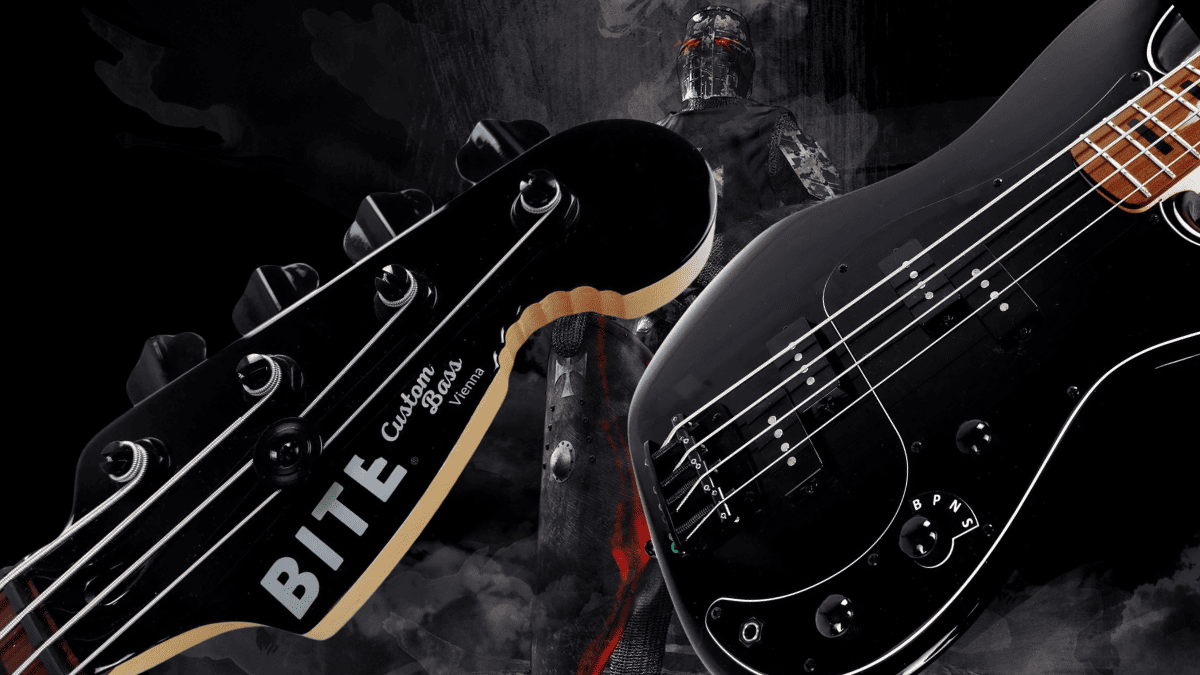
This is a written transcript of our video review of the BITE Custom Bass Black Knight PP Bass originally published on March 4, 2024
BITE Custom Bass – The Black Knight PP Bass Review…
Bass Musician Magazine did a review on a Steampunk bass from BITE Guitars about three years ago, it was an amazing instrument, and we were very impressed. Now we’re happy to bring you another BITE bass, the Black Knight PP.
Everybody needs a P-type bass, it’s the standard of bass. If you’re recording, they want you to have a P bass. So why not have something that gives you a little more by having two instead of one P pickup. That’s the idea of this bass, it’s the first thing that leaps out: the double P pickup configuration.
Installing two of their 1000 millivolt split-coil pickups, BITE then went one step further and wired them up in a 4-way parallel/series circuit, a look at the controls reveal a 4-way rotary selector:
The first position, marked “B”, gives you the bridge pickup by itself.
The second position, marked “P”, gives you the bridge and neck pickups in parallel mode, that’s the traditional J-type circuit, it reduces output due to the physical law of parallel circuits.
Position number 3 is marked “N”, it gives you the neck pickup by itself.
And finally, number 4, marked “S”, gives your bridge and neck in a series (humbucking) mode which adds up resistances and thus boosts output. The other two controls are master volume and master tone.
What’s more, like every BITE bass, this one also has a reinforced headstock heel designed to give it extra output and sustain. The BITE website features a graph and explanation of what they have done to the heel, as compared to traditional headstocks.
A look at the body reveals a beautiful Black Blast body finish and underneath that we have alder wood. The bass has a matching headstock with a 4-in-line tuner setup and the traditional bite out of it, so everybody will know what kind of bass you’re playing. The pickguard is 3-ply black, the neck is vintage tinted hard maple and it has a satin speed finish at the back which keeps your thumb from sticking.
On top of that, there’s a clear-coated roasted black locust fretboard with black blocks marking the frets. The nut is a black Graph Tec nut, we’ve got diamond dome control knobs, and the tuners are lightweight compacts with cloverleaf buttons and a 1:17 ratio precision gear. The bridge is a Gotoh brass bridge with 19-millimeter string spacing.
Overall measurements: we’ve got a standard 34″ scale, a 1.65″ width nut and a C neck profile. This bass weighs 8.2 pounds, or 3,7 kilograms for our metric friends, and it uses standard 18% nickel silver frets.
Taking a closer look at the sound, this bass is a joy to play. The BITE proprietary 1000 millivolt pickups deliver an extraordinary amount of output which is surprising considering this is a passive instrument. You may even want to set your amp to active mode because of all of the juice you’re getting out of this guy.
The tonal possibilities are very versatile, it’s a straight P if you want but also much more with those different arrangements of the circuitry. So why have multiple basses when you’ve got one that can give you your basic P plus a lot more?
To sum it up, the Black Knight PP is an amazing instrument. The attention to detail that BITE puts into their basses is second to none. This bass is also amazingly balanced and gorgeous to hold and feel with the satin neck finish.
For more information, visit online at bite.guitars/product/black-knight-pp























